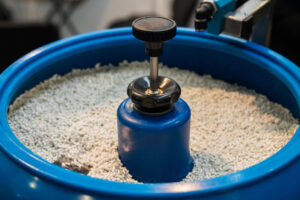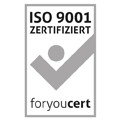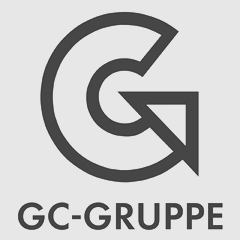Vibratory finishing
Vibratory finishing is barrel finishing is learning from nature
Vibratory finishing is a surface finishing process for primarily metallic workpieces. Also known as barrel finishing, the process corresponds to a fine grinding treatment analogous to that of shells and pebbles on the beach or riverbed. In a special bulk process, the workpieces are placed in a container together with abrasive particles – also known as chips – and an additive in usually an aqueous solution (compound). The oscillating or rotating movement of the container causes a relative movement between the workpiece and the processing agent. This relative movement ultimately also causes material removal from the workpiece. The roughness, material removal, surface appearance and deburring performance can be determined by the tools used (grinding tools and compound). Analogous to a riverbed, sand and water grind coarse pieces of rock until they are eventually smooth and completely rounded. Nothing else happens in the processes described here. Vibratory grinding is also known as sliding chip removal, since a grinding process does not necessarily always take place.

The term “barrel finishing” is simply an alternative wording for the process. Over the years, different vibratory finishing processes have developed. Starting with drum vibratory finishing, through vibratory finishing, plunge finishing and drag finishing, to centrifugal finishing and pressure flow lapping. For different types of materials, some processes are more suitable than others. However, the machining objectives are the same for all:
– Deburring, edge rounding
– Shining, smoothing, polishing (also referred to as high-gloss densification)
– Descaling, cleaning
– Matting
– Grinding
– Degreasing, de-oiling
Vibratory finishing as drum vibratory grinding
By drum vibratory grinding, metal or plastic parts can be deburred, polished or rounded at edges. Due to the slow rotation of the drum, this process is considered particularly gentle on the material.
In barrel finishing, an inclined container (barrel/bell) rotates around its longitudinal axis. Here, the rotation of the drum creates a relative movement between the workpieces and grinding wheels, which causes abrasion. Depending on the desired result, different abrasives (plastic, ceramic) can be used as well as the rotational speed of the drum can be adjusted. As the speed increases, the abrasion increases and the surface finish decreases. Barrel finishing was the first application of vibratory finishing (barrel finishing). It is also known as barrel deburring, barrel polishing or barrel finishing.
Vibratory finishing – also for batch size 1
This type of process is primarily used to process large and heavy components. Vibratory finishing is suitable for deburring, rounding, polishing or smoothing surfaces.
The parts to be machined are fed into the system with grinding wheels, where they are vibrated by large vibrators. In this way, even those components can be finished that would remain at the bottom of the batch, get stuck or bumped up in the container during drum and centrifugal grinding. The resulting friction between the components and the added grinding media causes material removal (micro-chipping) on the surface.
Drag Grinding & Plunge Sliding Machining
Drag finishing systems are particularly suitable for high-quality and damage-sensitive workpieces as well as hard and therefore difficult-to-machine workpieces, as they can be machined without contact. In this way, defects and other damage can be prevented.
However, the workpieces must therefore be clamped individually on spindles, which means that only a small number of parts can be machined. The workpiece carrier then drags the parts through a chip mass. Due to the ordered fixture, the parts are finished very evenly. Variable plunge depths and speeds in the rotary motion allow up to 40 times the material removal rate of conventional vibratory grinding. To achieve the desired goal of deburring, rounding or polishing, other grinding and polishing media can also be used.
Plunge finishing works in a similar way. In this case, however, the parts to be machined are immersed in flowing abrasive. Both process techniques are only recommended in exceptional cases. Advantages are short machining time, gentle and orderly machining.
Centrifugal force grinding: Effective and fast
Centrifugal force grinding is ideally suited for machining small and medium-sized parts. This process technology can be used to finish components particularly effectively and quickly. It is divided into two techniques.
Planetary centrifugal machining is characterized by a rotor with several drums attached to the circumference, which rotate in the opposite direction to the rotor. This results in strong centripetal forces up to 15 times the force of gravity, pushing the components outward along with the vibratory abrasive. The strong forces result in a much faster machining process than similar drum vibratory finishing. The speed of the rotor and drum can often be adjusted to produce the desired degree of finishing. Unstable as well as hollow workpieces cannot be machined.
In disc-type centrifugal cutting, the batch is located in a stationary, pot-shaped container in which, in contrast to planetary centrifugal cutting, only the bottom rotates. Ribs attached to the bottom take the batch along, which rises up the container wall due to the centripetal forces and slides down again in the middle. The advantages are on the one hand again the reduced working time compared to drum sliding lapping, but on the other hand this process can also be used to treat unstable workpieces with sensitive surfaces.
Pressure flow lapping
Pressure flow lapping or flow grinding is particularly suitable for very complex shapes and specific machining operations. In this process, a viscous grinding paste is pressed through the workpieces under pressure. This rounds edges, removes particles and burrs, and significantly improves the surface finish. The nature of the abrasive and its speed determine the degree of machining.
Drum with abrasive

Gel grinding – the drying process
After vibratory finishing, the components are wet or damp and must be dried completely. In any case, drying can take place directly after the vibratory grinding process. Drying media such as corncob meal, nut meal or wood cubes are used in the drying process. Depending on the material properties or individual requirements, various drying options are available, ranging from vibration dryers to drum dryers and belt dryers.
Vibration dryer
In the vibration drying process, the workpieces are set in vibration together with a drying medium. Only the drying medium is heated and thus removes the moisture from the components. A resulting relative movement between the workpiece and the drying medium leads to additional post-polishing.
Drum dryer
A drum dryer is best suited for large masses of bulk material and flat components. In this process, a heated drying medium is added to the components, which are then continuously transported together through a rotating screen drum.
Belt dryer
Belt dryers are particularly suitable for sensitive, long and bulky parts or those with small bores. The workpieces are transported through a hot air system by means of a fine-mesh belt. Duration as well as temperature are adjustable.
Vibratory finishing: Economical and efficient
The vibratory finishing process allows workpieces to be deburred, edge-rounded, ground, smoothed, polished, degreased, descaled, derusted, matted and compacted. Compared to manual machining, vibratory finishing has several advantages. Longer tool life results in less downtime, edges and surfaces are very well rounded, and thus little rework is required. Autonomization makes the process very time effective. Depending on the shape, material and weight, other vibratory finishing processes must be used. From metal aluminum, stainless steel, carbide, copper, brass, titanium, plastic to ceramics, virtually all surfaces can be trowalized. No matter if stamped and laser cut parts, turned and milled parts, 3D printed products, deep-drawn parts, sintered parts, die castings or injection molded parts. The right process technology in combination with the abrasives used makes for a perfect result.




























